

Tallgrass Prairie Preserve | north of Pawhuska, Oklahoma
Image by Ebenezer | 7 June 2013
A Laurel for Lycidas
To read the poet Milton, far removed in time from our present voice, demands much of the casual reader. One must be determined and patient to grasp the sentiment of long-ago poetry — no matter how artfully the words are crafted. The language has radically changed o’er the three and a half centuries since the great poet wrote Lycidas, an elegy for his dear friend Edward, who died young by drowning. What hasn’t changed is humanity’s reverence for flowers as an expression of love and sorrow following a dear one’s death. For Edward, Milton imagined a well-wrought funeral urn decorated with a laurel of flowers. The primrose, pictured here, was intertwined with the musk-rose, wild hyacinth, jasmine, daffodil, cowslip, woodbine, and the immortal amaranthus in Milton's symbolic laurel — woven with a loving heart to honor his departed friend.
Enamored of flowers, caught up in their ephemeral grace and beauty, we took time enough to reflect on Milton's laurel and the many flowering species he chose to create it. We wished for a specimen of each blossom to arrange in a vase, knowing the funeral urn designated for us shall come later. Not now. You ask: What ennobles the evening primrose? She is the Princess of the Night. As darkness approaches, she prepares for an act of natural drama. “To watch the Evening Primrose open at dusk is a rare pleasure, the sepals and petals springing apart with a suddenness that is unique,” an anonymous author wrote in 1900 in Success with Flowers, a magazine devoted entirely to floriculture. Awake the long night through, the primrose isn't in such a hurry to draw back into sleep. Instead, she greets the early morning sunshine with a striking hello, wishing perhaps that she didn't have to go.
Barn Owl Superstars
A Flock of Happy Collaborators
By Ebenezer Baldwin Bowles
16 June 2020
A barn owl family is soon to be a family of video superstars — let's keep our fingers crossed — thanks to the efforts of Environmental Scientist Jeff Hickle and a flock of happy collaborators.
The Northwest Arkansas Master Naturalists ‘closed the deal’ on June 9 with a generous three-thousand dollar grant to the Barn Owl Nest Project, joining the engineering firm Jacobs, the City of Fayetteville, and Dunk Fire & Security in this innovative collaboration.
“We're overjoyed to have everyone onboard and ready to go on a project that's as unique as you can imagine,” Mr. Hickle said. “The grant from the Master Naturalists and in-kind contributions from the other collaborators transforms an exciting idea into something very real and downright cool.”
All Natural Reality TV
Cool is the right word to define a project that promises 24-hour, G-rated, organic, and all natural reality TV, featuring a barn owl couple and their little ones — viewers can actually watch the live birth of little chicks emerging from their egg. Way cool!
The nest box will sit atop an 18-foot tower visible from the Woolsey Wet Prairie, a 44-acre wetland restoration project adjoining the City of Fayetteville's West Side Water Resource Recovery Facility.
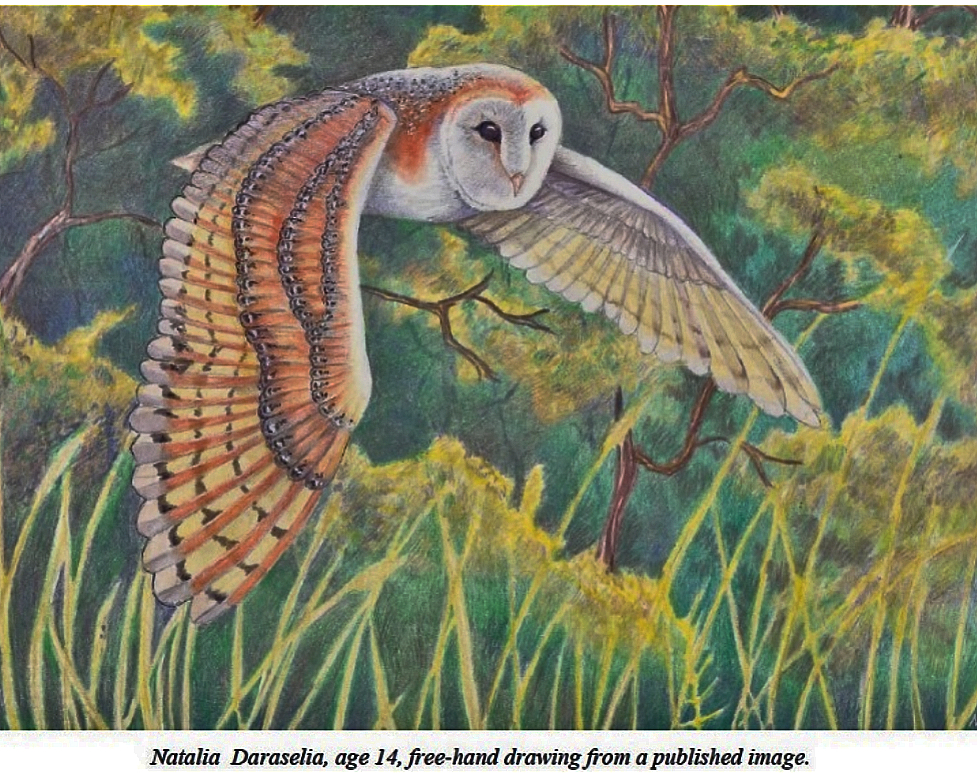
Opening the Door to Education
“We're very happy about the collaborative effort and what that means to the success of this exciting project,” said Dave Leisure, President of the NWA Chapter of Arkansas Master Naturalists. “Collaboration means cooperation, and that shows that everyone involved is going in the same direction for northwest Arkansas. The Barn Owl Nest Project is going to open the door to education, not only at the physical location of the nest, but also via video to school children everywhere to teach them about the life cycle of the barn owl.”
Three Internet live-feed cameras provided by Dunk Fire & Security of Springdale will allow monitoring of the resident owl activities throughout the year, especially during brood seasons. Two of the cameras will be placed inside the nest box with a third showing activities on the outside of the nest. On location, visitors to Woolsey Wet Prairie will be able to view the nest box from a trail.
The live feed will likely find a home at more than one northwest Arkansas website — for sure on the website of NWA Master Naturalists, which will host the live feed as well as archived video of the most interesting aspects of the life of the resident barn owls.
A Source of Education and Inspiration
“The project will reach local and international audiences and very likely will inspire others to positively engage in the stewardship of natural beauty and wildlife to the full benefit of bird lovers, students, and researchers,” Mr. Hickle said.
“Construction and care of wild bird nest boxes is an ideal way of engaging in conservation of certain vulnerable bird species,” Mr. Hickle continued. “The project will promote citizen science and education. The barn owl is a cavity nesting species that presents several unique conservation, engagement, and educational opportunities.”
Mr. Hickle recently observed a barn owl in the vicinity of Woolsey Wet Prairie, so he is confident there's a very good chance the nest box will be inhabited — and that's why we're keeping our fingers crossed here at Crow's Cottage. If you are a barn owl and know how to read, please accept our invitation for free lodging as long as you care to stay. Just be patient. We're building you a very nice home that should be ready by September.
A Great Thing for Everyone
“Folks from all over the world will be viewing the live feed, and that fits perfectly into our mission,” Mr. Leisure said. “The barn owl project will be providing education, outreach, and service to the northwest Arkansas community. It's going to be a great thing for everyone.”
Mr. Hickle hopes the Barn Owl Nest Project will be ready to go by early autumn. By the way, Woolsey Wet Prairie is listed as Arkansas Audubon Important Bird Area Number 33.
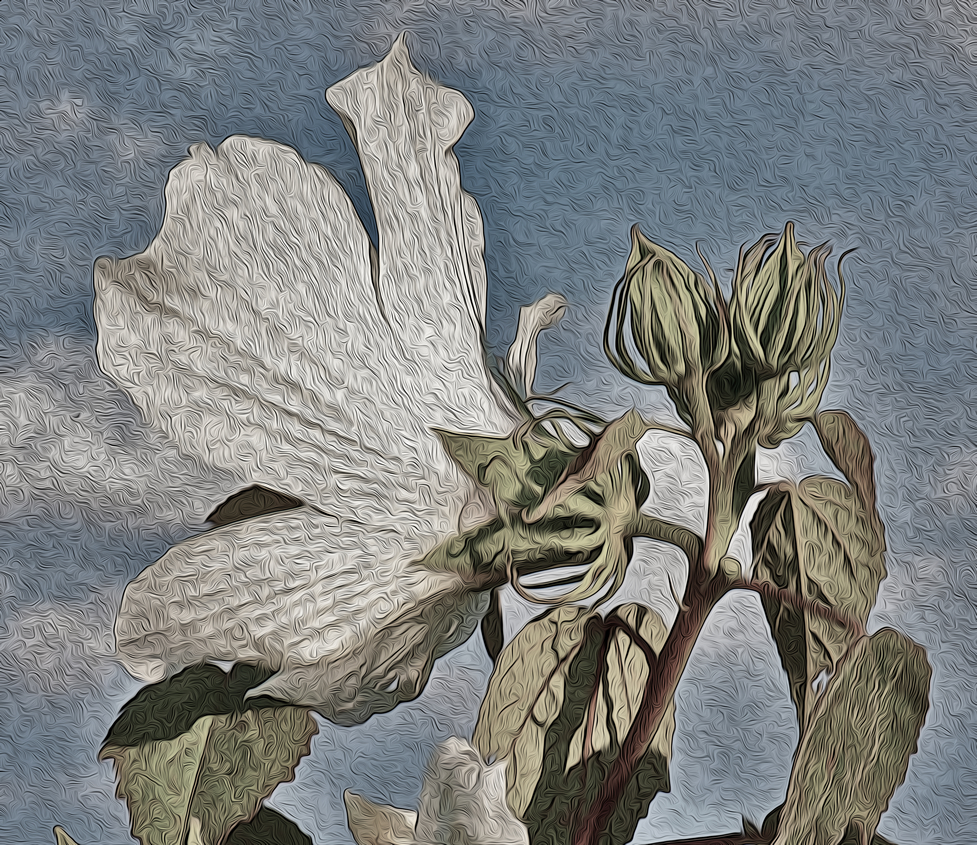
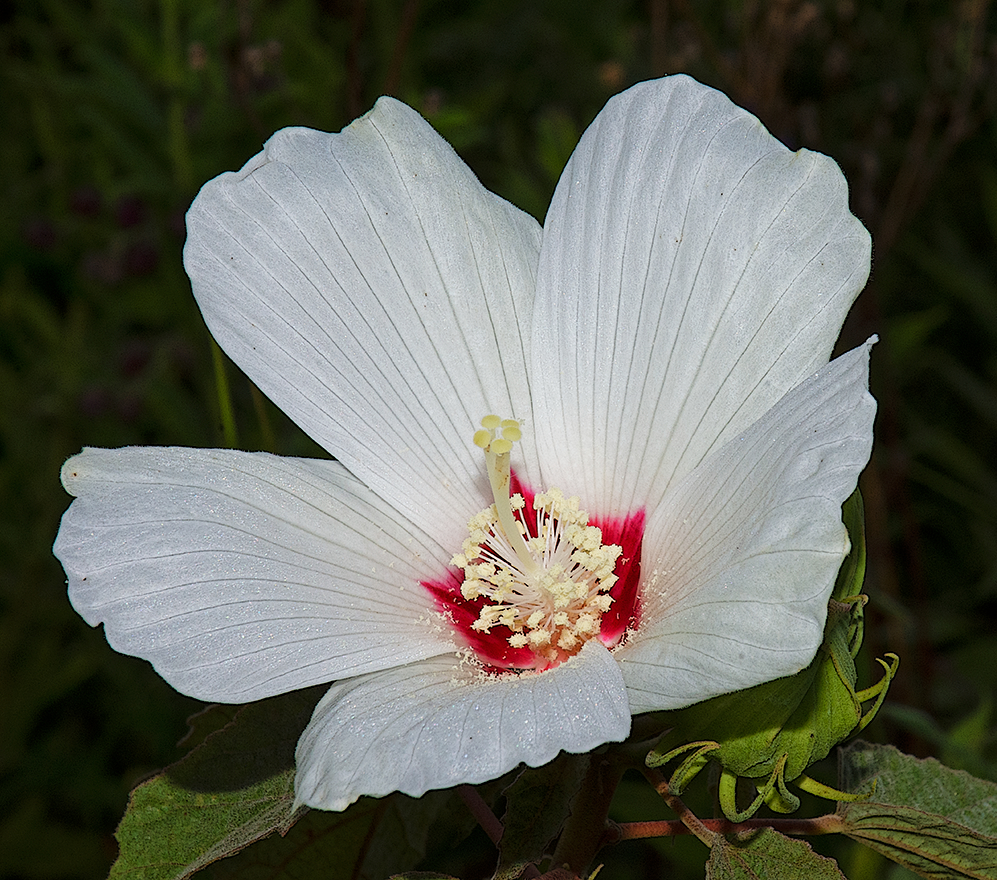
Woolsey Wet Prairie | Fayetteville, Arkansas
Images by Ebenezer | 16 August 2019
Here Come the Swamp Rose Mallows
Are you ready? If you admire the distinctive flowers of the Swamp Rose Mallow … well, they're only four or five weeks away from the time of their flowering. They'll be around for a while, too, all the way into autumn, especially when they live in a wet prairie, along a stream bank, or in a caring gardener’s flower bed. The hardy hibiscus, one of its street names, is a thirsty plant and also needs a full day of sun to really shine and show her beauty. It's no wonder, then, that Woolsey Wet Prairie in Fayetteville annually hosts a large family of thirsty Swamp Rose Mallows, taxonomy Hibiscus moscheutos subspecies lasiocarpos. They're really a sight to see.
To close this mini essay, we quote one of our favorite flora pros, Mrs. Jane Loudon, who writes in British Wildflowers (1848): “This species is one of the handsomest of the wild kinds of Mallow, and it generally flowers abundantly in July and August. It is common by the road-sides in gravelly soil, where it frequently grows two or three feet high, though always with very slender, branching stems. The whole plant smells faintly of musk. It is a perennial and is frequently cultivated in gardens.”
Lowly Sprightly Little Flower
Telling of a Brighter Bloom
Bursting in a Summer Hour
From Thy Waking Winter Tomb

Fig Leaf or Laurel Wreath?
Who's Doing the Greenwashing?
What happens when a green project goes black? In the lingo of the now, the answer is greenwashing — wash the project with a thin veneer of green, and then await the consequences. First things first, let's define greenwashing, a metaphor new to us: When a corporation, politician, or public relations screedster promises misleading or downright meaningless benefits from a so-called green product or project, then they are greenwashing. The supposed corporate friend of the environment rides onto the scene on a sleek trojan horse, hoping to appear more environmentally friendly than it really is. And then bad things happen.
“The world's waterfront cities should not be deluged with apparently green developments because these developments still carry the potential to cause damage to the marine and coastal environment, scientists have warned.” So states AZoCleantech, a pace-setting online publication and resource center based in Mona Vale, Australia … advertising itself as “a knowledge tool” for the science, engineering, and design community worldwide.
Poor Surrogates
For the Natural Environment
A suburb of Sydney, Mona Vale stretches along the Northern Beaches, which explains AZoCleantech's intense interest in the coastal ecosystems. “Coastal urban areas all over the world have expanded at an increasingly fast pace in recent years, with developers innovating a variety of ways to try and minimize their impact on natural habitats,” AZoCleantech states. True enough, but an international team of scientists, writing in the Journal of Applied Ecology, cautions engineers and project planners to be aware of the risks inherent in artificial structures and reclaimed land — that they are often poor surrogates for the natural environment they replace.
Well, hello.… Tell us something new. In the thirst for profit, corporate entities are greenwashing new coastal developments by installing seawalls, breakwaters, and artificial islands with no guarantee they will last or not cause harm. At special risk are the seacoasts of Africa, where a population explosion is threatening the wild coastlines with the potential for extreme habitat loss and mega-development. No matter where, no matter how well-meaning, “greened” coastal development “will always impinge on natural systems.”
So, we ask: fig leaf or laurel wreath? The fig leaf metaphor relates to an attempt to cover up environmental damage, or even worse, to cause deliberate harm. Even at the outset, the fig leaf covers very little. The laurel wreath, on the other hand, represents the delivery of measurable benefits for humans and nature when incorporated into redevelopment or regeneration projects. As for the anticipated rise in the sea level and how it shall affect coastal communities … that's another story for another day.

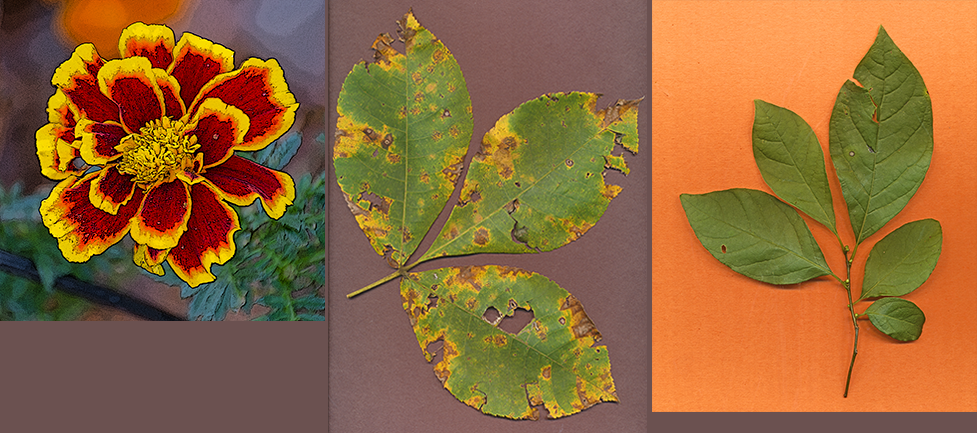
Nineteen Million, Seven Hundred Thousand
In this … our age of the Internet, every flower, every tree, every notion known to man, has an exhaustive list of entries in response to the simplest of queries — more info than any single searcher can hope to digest. The searcher discovers, more oft than not, that the search reveals an institutional sameness amongst the entries at hand. “Marigold,” for instance, displayed the absurd number of nineteen million, seven hundred thousand search results when I asked Bing a few moments ago. So, let us keep it simple (from left as they say): marigold, bitternut hickory, spicebush — each captured by pixels last year on the little swath of Mother Earth surrounding Crow's Cottage.
3 Dog Acres | rural Washington County, Arkansas
Images by Ebenezer | Twentieth Century

Plastic Rain
Seems like no place, however remote, can escape the plague of plastic now stressing the health of Mother Earth. “Plastic Rain in Protected Areas of the United States,” a new study published on June 12 by the American Association for the Advancement of Science, shows “that even the most isolated areas in the United States — national parks and national wilderness areas — accumulate microplastic particles after they are transported there by wind and rain,” the study states. “Most of these plastic particles are synthetic microfibers used for making clothing. These findings should underline the importance of reducing pollution from such materials.” To read the full report, kindly click this sentence.
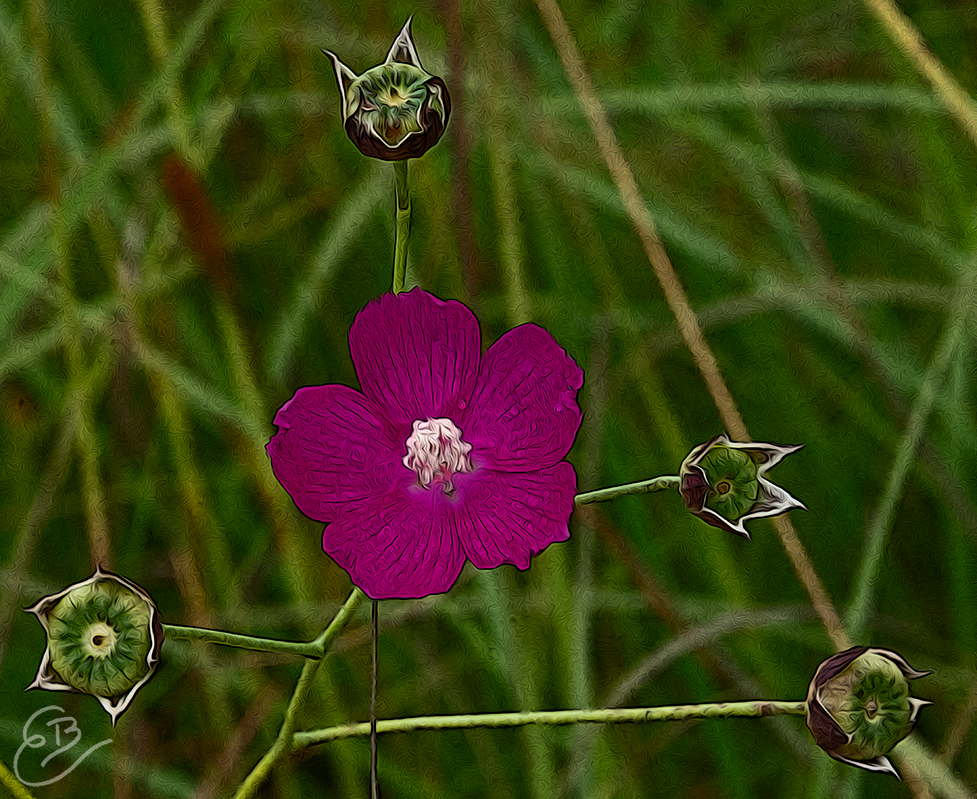
Long Prairie | Sebastian County, Arkansas
Image by Ebenezer | 29 June 2019
Prairie Mallow
The best description we've found to honor this little red beauty — she's only an inch or two in diameter — comes from James Vick, creator of Vick's Illustrated Monthly Magazine, who in 1878 saluted the “showy cherry red flowers” for their “striking and pretty appearance. It is a native of the western prairies, but grows well anywhere, and is easily raised from seed.” Then Mr. Vick diverted us into a little aside, — we like asides here at Crow's Cottage — writing: “The lovers of flowers have traversed the globe in search of treasures, and it is almost impossible to find a flower that is not known to florists and cultivated in our gardens.” She is a treasure, our Prairie Mallow, and like other much-admired wildflowers, — scientific name Callirrhë involucràta — she has a handful of names. We like Winecup Mallow best of all — you can also call her Purple Poppy Mallow if so inclined — but it's a fact, embedded in memory, that on a sunny, early summer morning — a splendid day it was, dry and hot, with excellent fellowship — we came across this specimen on prairie land in the Arkansas River valley, so it makes good sense today to tie the name Prairie Mallow to the appropriate landscape.
XXXI Odes of Horace.
Quid dedicatum.
Here are feasts for me
Where endive, mallow, succory grows.
O grant me, Phoebus, calm content,
Strength unimpair'd, a mind entire
Old age without dishonour spent,
Nor unbefriended by the lyre!

Boots on the Ground
The Illinois River Watershed Partnership (IRWP} released its 2019 Annual Report on June 12 with the theme “Boots on the Ground.” The report includes a new Mission Statement, which reads: “The Illinois River Watershed Partnership works to improve the integrity of the Illinois River Watershed through public education, outreach, and implementation of conservation and restoration practices throughout the watershed.” The report also shares the IRWP's institutional vision: “The Illinois River and its tributaries will be a fully functioning ecosystem, where ecological protection, conservation, and economically productive uses support diverse aquatic and riparian communities, meet all state and federal water quality standards, promote economic sustainability, and provide recreational opportunities.” To read the full report, kindly click this sentence.



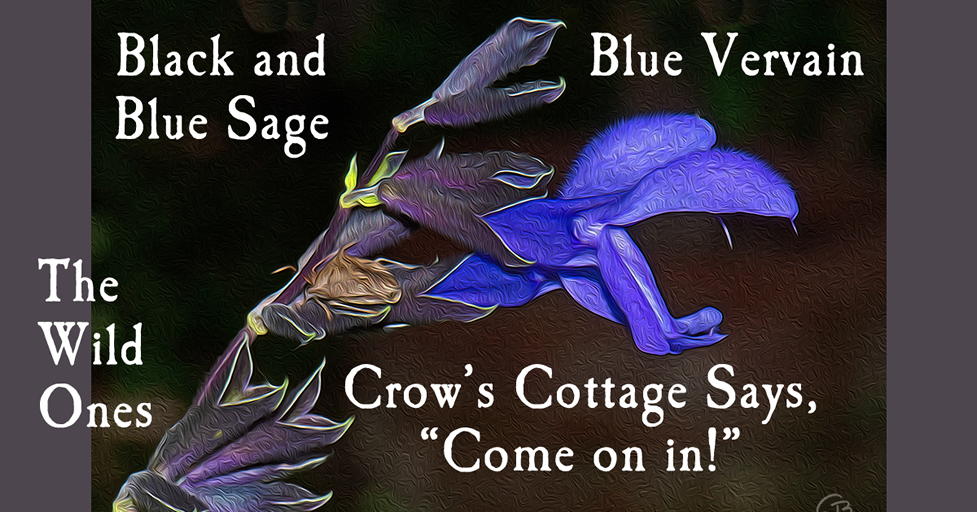

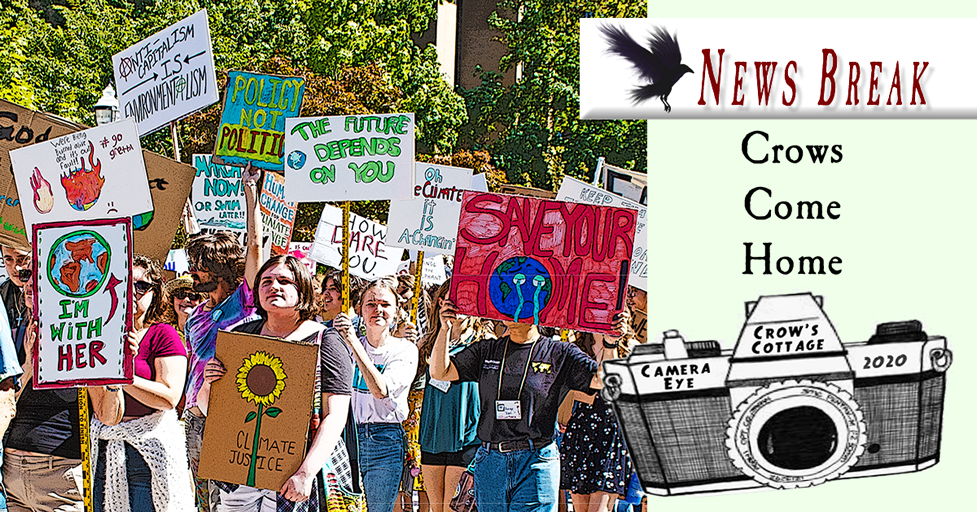
As always, we invite you to write us letter of encouragement or correction. You can even chastise us if you're respectful. Expect a courteous and timely reply. And let us know if you'd like to receive a notice about new features. Our address is ebenezer@crowscottage.com




